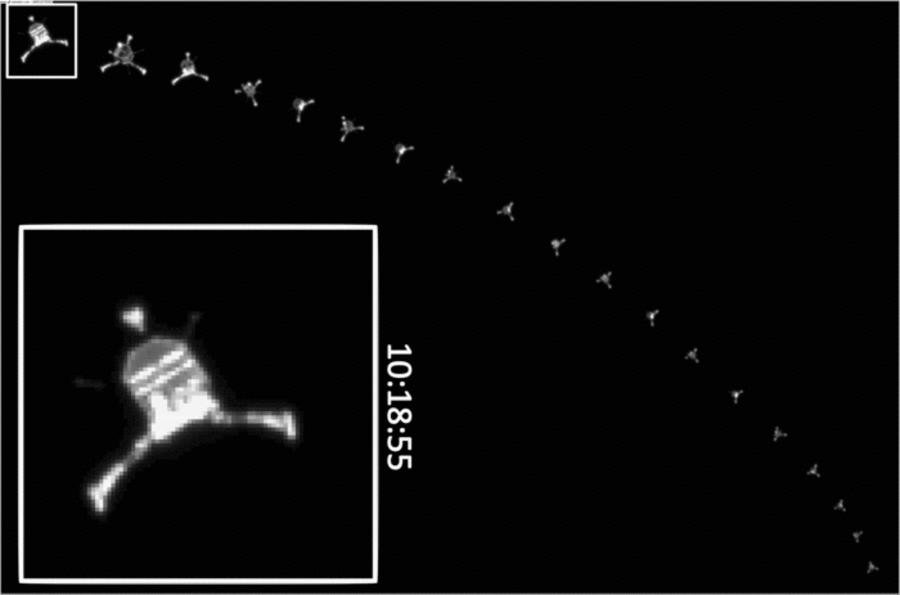Lost comet lander Philae could wake up in May, say scientists
Loading...
Sen—Philae, the lost lander that Rosetta planted on the surface of Comet 67P/Churyumov-Gerasimenko, might get enough sunlight to wake up in March and make contact again in May or June, space scientists said today.
After its landing wowed the world in November, Philae beamed information back to Earth for a few hours before its batteries drained flat. It is now known that it skipped several times across the comet's surface—its anchoring harpoon having failed to fire—before presumably landing in a shadowy region that has been named Abydos.
What has happened to it since then? Beforehand, scientists did their best to try and orient Philae towards the Sun, but to no avail. Now, even when taking high-resolution images from orbit, Rosetta has been unable to locate the intrepid lander.
Unable to use sunlight to recharge itself, Philae has not been heard from since. And some fear it has been lost forever.
But that has not stopped scientists trying to locate it. “We’re looking, by eye, for a set of three spots that correspond to the lander,” Dr Holger Sierks of the Max Planck Institute for Solar System Research, Germany, says on ESA's Rosetta blog, where new images were also released.
Sierks is the principal investigator of the high-resolution camera, called OSIRIS, that has been attempting to locate Philae. Such spots, about 3-pixels in size, appear all over the comet. It is like looking for a grain of salt on a sandy beach.
And as if the task was not challenging enough, Rosetta's trajectory is now further away from the comet than before. Still the scientists gave it their best shot. They knew where the lander should be and when it should be illuminated by the Sun—67P/Churyumov-Gerasimenko rotates every 1.3 hours.
But long shadows cast by the comet's craggy surface have further hampered attempts to locate it. And Philae's cold silence strongly suggests that it is in permanent darkness, where sunlight can not touch it. The European Space Agency (ESA), which launched Rosetta, has said that it will no longer conduct dedicated searches for Philae.
But as the recent discovery of the intact Beagle 2 probe on the surface of Mars shows, miracles can, and do, happen in space. The scientists' task may be made easy if Philae wakes up again. How could it do this with no power available? The comet is approaching ever-closer to the Sun, such that by May, Philae's probable landing site will be illuminated directly from overhead.
Originally, by that time, Philae would have got too hot to continue functioning. But now at its new location it should receive 20 per cent of the sunlight that it would have done on first landing.
ESA's experts believe that Philae may get enough sunlight to awake from hibernation in March. But the charge would not be sufficient for the lander to communicate with its mothership until May or June.
Its transmitters need at least 17 watts to call out to Rosetta—never mind start to do any science. The European Space Agency will be listening intently, but it is all up to Philae now. Hopefully it will get enough sunlight to charge-up its batteries, while remaining cool enough to function—that is, if it still can.
Philae experiment grabbed precious data before lander was lost
New shots of Philae will help Rosetta team find where it landed
Rosetta to keep listening for signs of life from Philae
Thank you and goodnight! Philae's power levels plunge
Touchdown! Philae lands on comet
Where is Philae? When will it wake up?
Original story from Sen. © 2015 Sen TV Limited. All rights reserved. This material may not be published, broadcast, rewritten or redistributed. For more space news visit Sen.com and follow @sen on Twitter.





